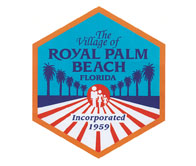Royal Palm Beach Councilman David Swift suggested last week that the village consider anteing up $10,000 to stay at the table of the C-51 Reservoir Project, a three-county plan that initially calls on Palm Beach County to funnel its excess water to Broward and Miami-Dade counties, which are projected to face severe water shortages in the future.
At a council meeting Thursday, Oct. 17, Swift explained that part of the plan is to store stormwater runoff in another reservoir at Palm Beach Aggregates, similar to the L-8 reservoir also located there.
Swift, who sits on a committee studying the project, said the $10,000 is a proposed cost share to pay $150,000 to an independent consultant for a cost assessment on the South Florida Water Management District’s C-51 Reservoir Project.
“What they’re trying to do is get a real estimate from an independent engineering company to assess the cost to build the C-51 reservoir,” Swift said. “They need $150,000 for a consultant that has been hired primarily by Palm Beach County, and they are looking for contributors. The county is a big player in this. They have come up with a way to split this.”
Swift said the first cost estimate for the C-51 project was about $1 billion for all three phases.
“I think that kind of turned off some people,” he said. “The second study was done by Palm Beach Aggregates. They have several different components, and they came up with about $700 million. The folks in Broward County, since they are going to be paying into this, want to have a real cost estimate. I think the voodoo of this is how much the land is actually worth.”
Councilman Fred Pinto said the C-51 board came into being through a recent resolution from the member counties of Miami-Dade, Broward and Palm Beach. “One of the major tasks is to validate a lot of the estimates that have been done,” Pinto said. “The C-51 project right now focuses on what they call Phase One. There are going to be multiple phases to this initiative.”
Pinto explained that it is a multi-year project from which Palm Beach County might not see an immediate benefit.
“The importance of this is that everyone sitting here today will not realize the direct benefits, but our children, and maybe their children’s children, would realize the benefits of this initiative,” he said. “It is a long-term strategy to provide potable water for the entire region. It is a huge initiative.”
Pinto said part of the angst now, particularly for Palm Beach County, is that the initial benefit will be to Broward and Miami-Dade counties, and Palm Beach County will not see any tangible benefits until later phases.
He said the dilemma for Palm Beach County and its municipalities is how much money they will be willing to put up when they will see no immediate benefit under the modeling done so far. “I think maybe we should make this an agenda item and have our staff put together a presentation for us so we understand what we’re signing up for,” Pinto said.
Village Manager Ray Liggins said he sees the project as being of benefit to people in the water utility business. “It looks to me, in Palm Beach County, that by putting this $10,000 up, what they’re doing is keeping a seat at the table,” Liggins said. “While the first phase goes to Broward, they don’t want to lose a seat at the table.”
Swift said the short-term benefit for Palm Beach County would be reduced stormwater outflow to the Lake Worth Lagoon, which is adversely affected by abrupt changes in salinity. He also expected that water tables would remain higher in Palm Beach County.
“Fred is completely right,” Swift said. “Are we in the game or not? I am uncomfortable being one of the smaller cities in the county being in on this.”
He said Boca Raton is the largest city involved from Palm Beach County, and Seacoast Utilities put in $10,000, although it is too far north to benefit directly.
“From a water resources standpoint, there is a geological formation that is very unique that can store a whole bunch of water,” Swift said. “Fred is right, our children’s children would be the beneficiary of this. There is very strong support in Broward County for this because they don’t have a source of water 20 years from now.”








